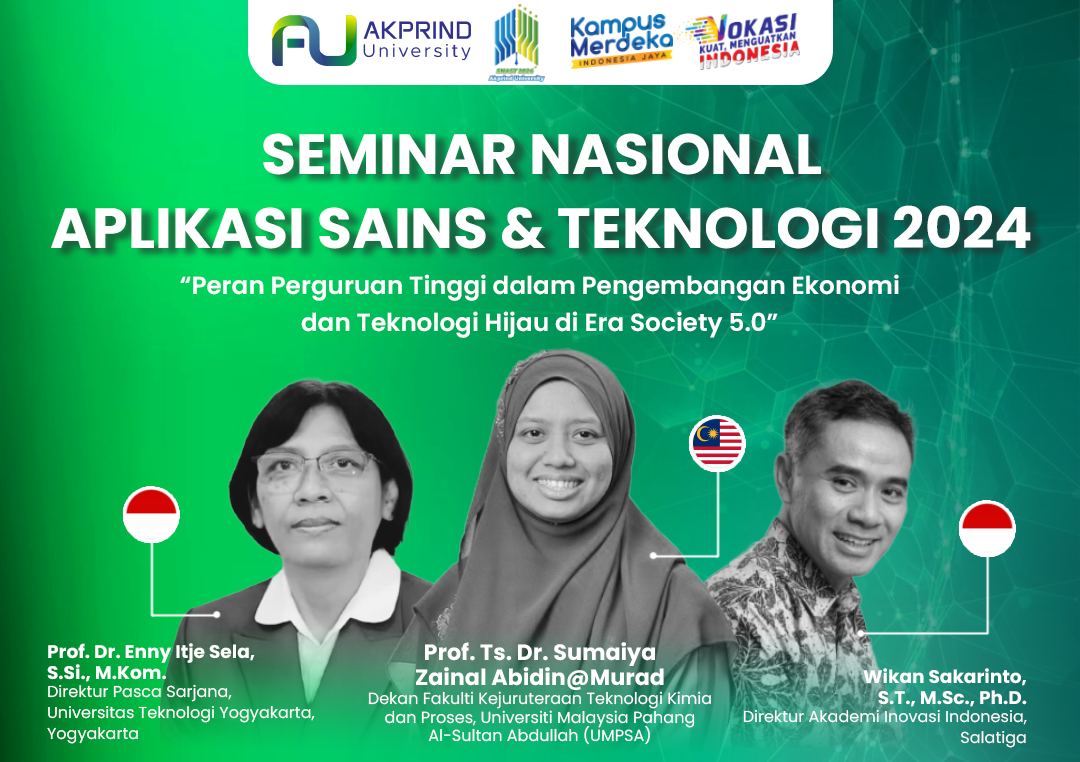PERBAIKAN KUALITAS NEPS SLIVER RAYON PADA PROSES CARDING DENGAN METODE DMAIC
DOI:
https://doi.org/10.34151/prosidingsnast.v1i1.4991Keywords:
Carding Machine, DMAIC, Neps, Spinning IndustryAbstract
High levels of neps are a critical problem in the carding process in the spinning industry because they will affect the quality of the sliver. The purpose of writing this paper is to reduce the level of neps from 6 neps/gram to 4 neps/gram according to company standards with the DMAIC (Define, Measure, Analyze, Improve and Control) method. The implementation of the DMAIC method in the textile and clothing industry is a successful strategy to reduce defects generated along the production line. At the defined stage using the Pareto diagram found the highest type of neps defect in the daily quality check of sliver carding. Cause and effect analysis with a fishbone diagram illustrates that the critical cause is the neglect of machine cleanliness according to the applicable Standard Operational Procedures. After making improvements with the DMAIC method, the neps level decreased from 6 neps/gram to 3 neps/gram, exceeding the standards set by the company. Although the results show a significant decrease in the number of neps, there is a small variation in weekly results that may be caused by environmental factors or variations in the production process that are not fully controlled. Further research is needed to understand these factors and control them more effectively. The results of this study indicate that the DMAIC method not only helps in identifying problems but also in implementing effective solutions. This study contributes to the theoretical benefits of DMAIC in process improvement and practically in the textile industry.
References
Abbes, N., Sejri, N., Xu, J., & Cheikhrouhou, M. (2022). New Lean Six Sigma readiness assessment model using fuzzy logic: Case study within clothing industry. Alexandria Engineering Journal, 61(11), 9079–9094. https://doi.org/10.1016/j.aej.2022.02.047
Akter, S., & Helali, Md. M. (2021). The effect of mechanical crimp on the basic properties of jute yarn. Materials Today: Proceedings, 46, 425–432. https://doi.org/10.1016/j.matpr.2020.09.431
Alagirusamy, R. (2013). 6—Process control in blowroom and carding operations. In A. Majumdar, A. Das, R. Alagirusamy, & V. K. Kothari (Eds.), Process Control in Textile Manufacturing (pp. 132–157). Woodhead Publishing. https://doi.org/10.1533/9780857095633.2.132
Aripova, O. A., Kazakov, F. F., & Sattarova, N. N. (2023). Changes in the distances of the main working parts of modern carding machines and their analysis. Современные Инновации, Системы и Технологии - Modern Innovations, Systems and Technologies, 3(4), 0101–0108. https://doi.org/10.47813/2782-2818-2023-3-4-0101-0108
Bagwan, A., & Jadhav, K. (2016). Card Setting: A Factor for Controlling Sliver Quality and Yarn. Journal of Textile Science & Engineering, 06. https://doi.org/10.4172/2165-8064.1000246
Bashatah, J. A., Sherry, L., Dam, S., Flenniken, L., Hartmann, P., & Harold, T. (2021). Analyzing Standard Operating Procedures Using Model-Based Systems Engineering Diagrams. INCOSE International Symposium, 31(1), 1130–1144. https://doi.org/10.1002/j.2334-5837.2021.00891.x
Daniyan, I., Adeodu, A., Mpofu, K., Maladzhi, R., & Kana-Kana Katumba, M. G. (2022). Application of lean Six Sigma methodology using DMAIC approach for the improvement of bogie assembly process in the railcar industry. Heliyon, 8(3), e09043. https://doi.org/10.1016/j.heliyon.2022.e09043
Elmogahzy, yehia. (2024). Learn About The Effect of Fiber Neps. Retrieved 12 October 2024, from https://www.cottonusa.org/expert-outlooks/learn-about-the-effect-of-fiber-neps
Ibrahim, T. M. (2019). Implementation of Lean Six Sigma in the Yarn Manufacturing: A case study. 10(12).
Industrial human resources development agency, I. ministry of industry. (2021). Pembangunan Vokasi Industri Bertaraf Global Menuju Corporate University BPSDMI Kementerian Perindustrian.
Islam, Md. R., Zubaer, N., Iqbal, T., & Khan, Md. A. (2019). Mathematical Logic Establishment for Automated Trash Controlling in Carding Machine. European Scientific Journal ESJ, 15(3). https://doi.org/10.19044/esj.2019.v15n3p38
Jiang, X., Cheng, L., Yu, J., Wang, Q., Stojanovska, E., & Xu, S. (2012). Relationship between Akund Fibers’ Carding and Sliver Quality. Advanced Materials Research, 476–478, 2014–2019. https://doi.org/10.4028/www.scientific.net/AMR.476-478.2014
Kanon, T. A., Rashid, Md. E., Haque, R. U., Islam, Md. A., & Khan, Md. R. (2023). Double air suctioned carding process: A method for achieving improved quality ring-spun carded yarn. Heliyon, 9(1), e13096. https://doi.org/10.1016/j.heliyon.2023.e13096
Kumar, S., Goga, G., & Singh, A. (2021). Application of DMAIC Tool of Six Sigma in Small Scale Industry. International Journal of Advance Research and Innovation, 9(1), 49–53. https://doi.org/10.51976/ijari.912108
Lal Regar, M., Ram Meena, C., & Singh Hada, J. (2023). 13—Fiber testing. In R. Chattopadhyay, S. K. Sinha, & M. L. Regar (Eds.), Textile Calculation (pp. 301–324). Woodhead Publishing. https://doi.org/10.1016/B978-0-323-99041-7.00013-8
Mittal, A., Gupta, P., Kumar, V., Al Owad, A., Mahlawat, S., & Singh, S. (2023). The performance improvement analysis using Six Sigma DMAIC methodology: A case study on Indian manufacturing company. Heliyon, 9(3), e14625. https://doi.org/10.1016/j.heliyon.2023.e14625
Motin, Md. M., Khan, A. N., & Rahman, Md. O. (2023). Study on Licker-In and Flat Speeds of Carding Machine and Its Effects on Quality of Cotton Spinning Process. Journal of Textile Science and Technology, 09(03), 198–214. https://doi.org/10.4236/jtst.2023.93013
Niedziela, M., Sąsiadek, M., & Woźniak, W. (2021). Modelling of the selected mechanical properties of the modern double-drum cards for manufacturing of spunlace nonwovens. The Journal of The Textile Institute, 112(10), 1655–1665. https://doi.org/10.1080/00405000.2020.1835154
Nowotarski, P., Szymanski, P., & Rzepecka, P. (2019). DMAIC Method of Quality Improvement of Ground Works Processes: Case Study. IOP Conference Series: Earth and Environmental Science, 221, 012002. https://doi.org/10.1088/1755-1315/221/1/012002
Pujianto, H. (2020). Implementasi Kaizen Dalam Meningkatkan 5S dan Menjaga Kualitas Hasil Praktik Pada Workshop Pertenunan di AK-Tekstil Solo. Majalah Teknik Industri, 28(1), 43–49.
Pujianto, H., Dharma, F. P., Hindardi, D., & Tuwarno, T. P. (2021). Penentuan Setelan Rotor Mesin Open End Untuk Pembuatan Benang Ne 6 sebagai Upaya Jaminan Atas spesifikasi dan Kualitas Pada Workshop Pemintalan di Ak-Tekstil Solo. Indonesian Journal of Laboratory, 4(2), 46. https://doi.org/10.22146/ijl.v4i2.66993
Rashid, Md. E., Islam, Md. A., Kanon, T. A., Khan, Md. R., Uddin, Md. B., Haque, R. U., … Haque, Md. M. (2024). Valorization of dyed brush fiber waste through production of upcycled mélange yarn: A sustainable approach. Journal of Cleaner Production, 447, 141464. https://doi.org/10.1016/j.jclepro.2024.141464
Sakti, S., Sopha, B. M., & Saputra, E. S. T. (2021). Energy Efficiency Analysis in a Textile Company Using DMAIC Approach. IOP Conference Series: Materials Science and Engineering, 1096(1), 012007. https://doi.org/10.1088/1757-899X/1096/1/012007
Salah, B., Alnahhal, M., & Ali, M. (2023). Risk prioritization using a modified FMEA analysis in industry 4.0. Journal of Engineering Research, S2307187723001645. https://doi.org/10.1016/j.jer.2023.07.001
Sayed, Z. B., Afrose, N., & Kabir, S. (2021). Impact of the Speed of Flat of a Typical Carding Machine on the Quality of Carded Sliver and 40 Ne Yarn. Journal of Textile Science and Technology, 07(01), 66–76. https://doi.org/10.4236/jtst.2021.71006
Wang, C.-N., Nguyen, T.-D., Thi Nguyen, T.-T., & Do, N.-H. (2024). The performance analysis using Six Sigma DMAIC and integrated MCDM approach: A case study for microlens process in Vietnam. Journal of Engineering Research, S2307187724001032. https://doi.org/10.1016/j.jer.2024.04.013
Downloads
Published
Issue
Section
License
Copyright (c) 2024 Hendri Pujianto

This work is licensed under a Creative Commons Attribution-ShareAlike 4.0 International License.







